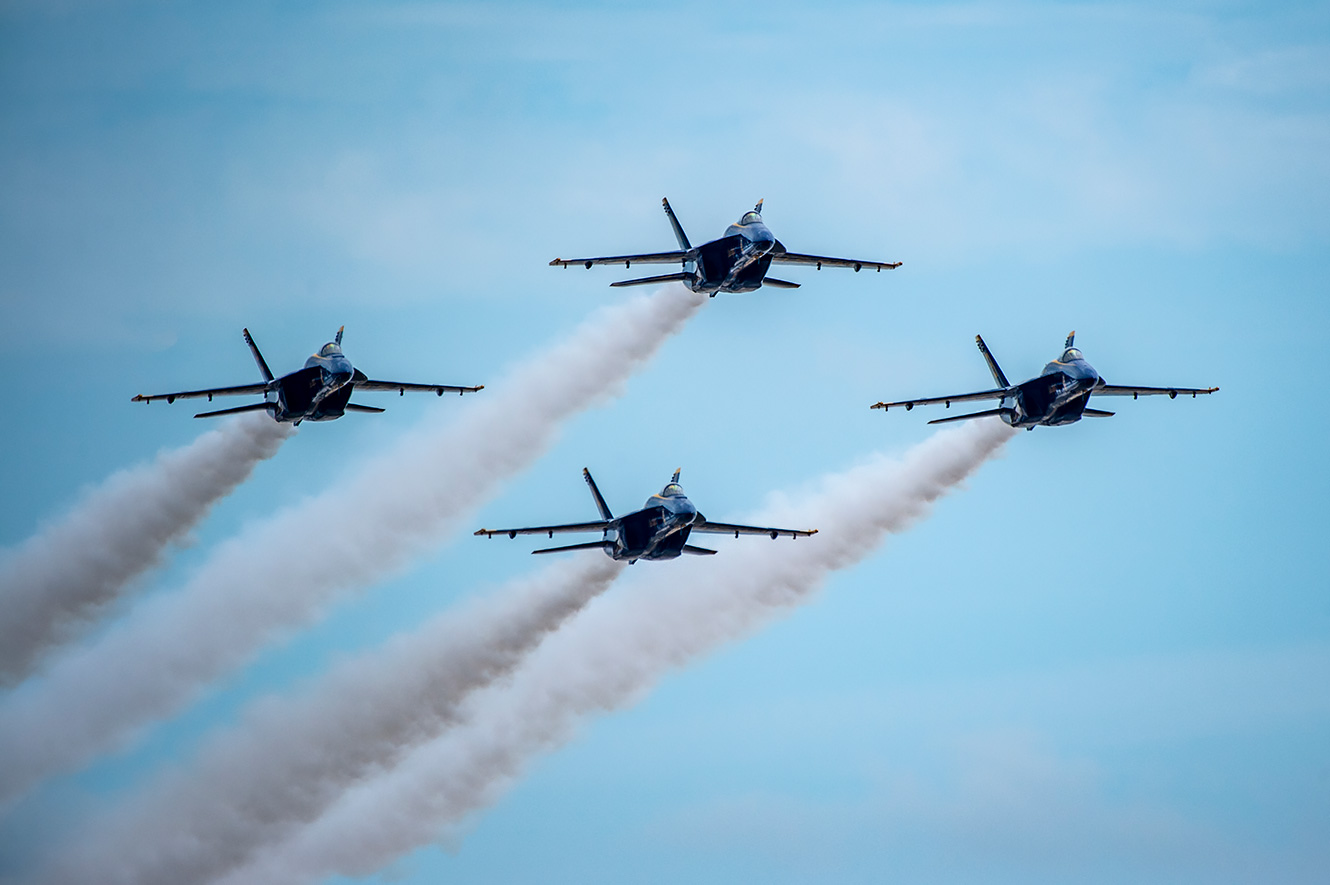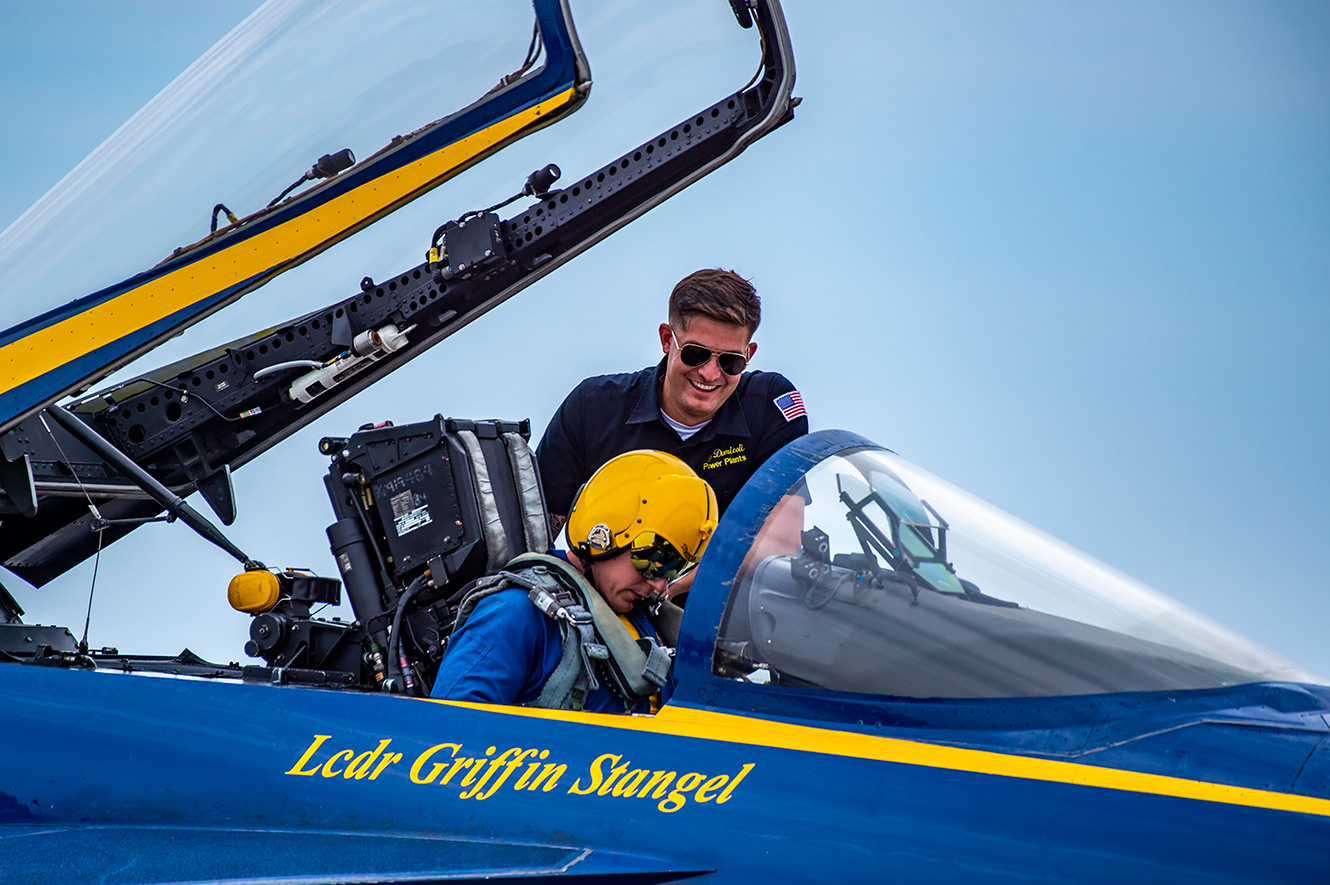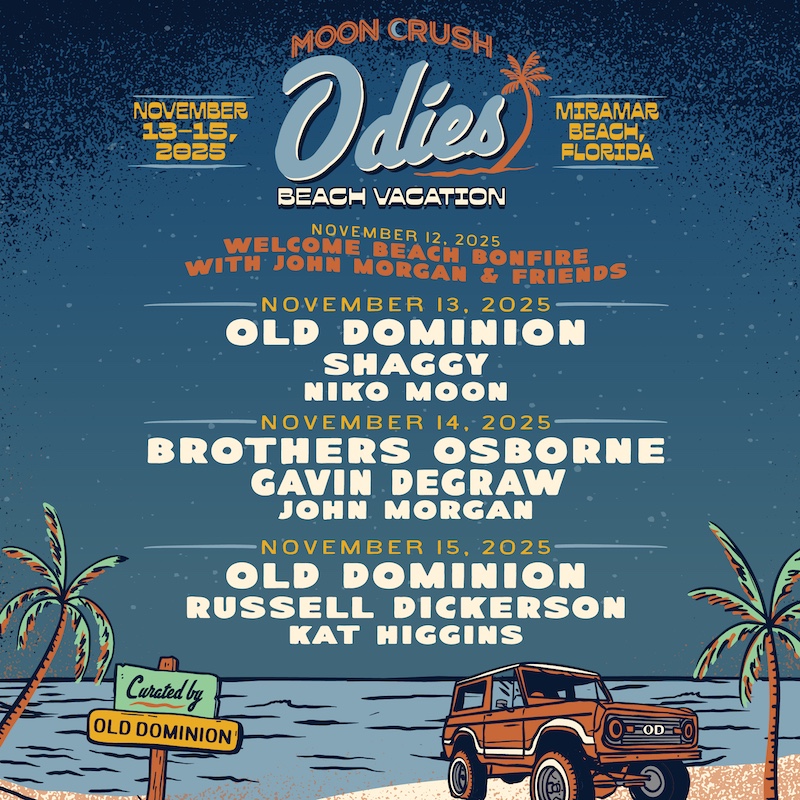
It was the end of World War II. Chief of Naval Operations, Admiral Chester W. Nimitz ordered that a flight demonstration team be organized to raise and maintain public interest in naval aviation. Within 90 days on June 15, 1946, a group of Navy aviators performed their first flying demonstration at the Naval Air Station (NAS) in Jacksonville, Florida. They were then called the Navy Flight Exhibition Team and were led by Lieutenant Commander Roy “Butch” Voris, who flew a Grumman F6F-5 Hellcat.
It was a month later that they flew another aviation performance, this time in Omaha, Nebraska, and Right Wing Lt. Maurice “Wick” Wickendoll came across the name “Blue Angels” in a copy of the New Yorker Magazine. He shared the name with Voris, who exclaimed, “That sounds great! The Blue Angels. Navy, Blue and Flying!” and the Blue Angels, or affectionately known as “The Blues,” were given the name they go by today.
In 1947, Flight Leader Lt. Cmdr. Robert Clarke introduced the now-famous Diamond Formation. This was followed by two others: the Diamond Loop and the Diamond Barrel Roll, both of which are still performed today.
For a brief period of time, the Blues were based out of Corpus Christi, Texas, but in 1949, they made their permanent home at the NAS Whiting Field in Pensacola, Florida. The Blues were disbanded during the Korean conflict, with the team flying from the aircraft carrier, the USS Princeton, in 1950. Blue Angels leader Lt. Cmdr. John Magda was the first to die in combat, fighting against North Korean and Chinese troops who were firing upon his Grumman F9F-2B Panther.
In May 1954, on Armed Forces Day, the newly reformed Blue Angels performed with the Air Force’s new aviation demonstration team, the Thunderbirds. It was that same year that the Blues perfected their maneuver, the remarkable and inspiring Fleur de Lis. Another addition that year was the inclusion of a Marine Corps pilot to fly with the Blues. In 1958, the first six-plane Delta maneuvers were perfected.
In the 1960s, the Blues added the Farvel maneuver, in which the other planes would fly straight, and the lead pilot would fly inverted above them. This was added to and became the Double Farvel maneuver. The first female to become a Blues team member was in 1968, with Lt. Mary Russell coming aboard as Assistant Public Affairs Officer. In 1970, the Blue Angels transitioned to a Marine Corps Lockheed Hercules, a tactical transport aircraft, operated by an all-Marine crew, and given the nickname “Fat Albert” (a tactical transport aircraft is one capable of flying low enough to avoid detection by radar, and that can drop supplies to troops on the ground below).
There was a tragic event in 1973 when the Flight Leader, Left Wing Pilot, and crew chief were all killed in an arrival maneuver, and the rest of the season was canceled that year.
There were other positive milestones in the 70s and 80s. Another female, Aviation Electrician Mate Penny Edwards, joined the Blues in 1978 as a maintenance team member. In 1985, the Blues’ first Black pilot, Lt. Cmdr. Donnie Cochran, came on board as well. He would go on to become the Commanding Officer of the Blues in 1994, this time with the rank of Commander.
The Blue Angels are the only aviation demonstration team in the world that can perform the so-called “Dirty Loop” maneuver, in which they fly in formation with the landing gear down.
Not only are the Blues excellent pilots, but during times of need, such as in the aftermath of Hurricane Ivan (2004), the Blues helped with community outreach, helping those in need. In 2013, the Blues performed more than 5,000 hours of community service, squadron wide.
Another milestone was reached when, in 2015, Marine Captain Katie Higgins became the first female Blue Angels pilot, flying a Lockheed Martin C-130T Hercules transport aircraft.
The year 2026 marked the 80th anniversary of the Blues flying, and for all their daring, precise aerobatics, they have only had a total of 26 fatalities in all those years.
The Blues, as they are affectionately called today, perform all over the U.S. as well as internationally, and have thrilled multiple millions of people. One of my favorite performances of theirs is when they do a flyover at the graduation ceremony of the U.S. Naval Academy in Annapolis, Maryland. They also appear at civilian and military air shows as part of the official Department of Defense (DOD) and Department of the Navy Community Relations Programs.

The Blue Angels’ performances and practice schedules are both subject to change. Although there isn’t a Blue Angels Museum per se, the National Naval Aviation Museum in Pensacola has some artifacts relating to the Blues on display there. In addition, the museum has a viewing area for visitors to watch the Blues practice. For more about the blues, go to www.blueangels.navy.mil.
Note: This story is an excerpt from my upcoming book, AMAZING FLORIDA: FASCINATING FACTS, INTERESTING TIDBITS, AND INTRIGUING TALES FROM THE SUNSHINE STATE. It will come out next fall, published by Moon Howler Publishing. TJL www.TJensenLacey.com

























